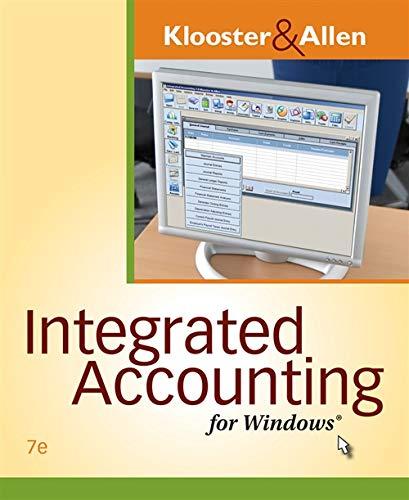Question
1). To understand a product's expectancy (relative competitive strength), the best data to analyze is: Stock market results (p. x Capstone Courier) Market size and
1). To understand a product's expectancy (relative competitive strength), the best data to analyze is: Stock market results (p. x Capstone Courier)
Market size and growth
TQM investments Market segment results (pp. 5-9 Capstone Courier)
Selected Financial Statistics (p. 1 Capstone Courier)
2). Market size, demand, and growth rate help assess: Market share Valence Economies of scale Expectancy Organizational strength
3). What will be the total Demand in the Traditional segment next round?
Please see pdf attachment
4). Based on the data from the Production Analysis data only (ceterus peribus, p. 4 Capstone Courier provided), which of the following statements is correct.
Dot under-forecasted demand
None of the above
Bold has high valence
Bold is 'defending'
Coat has the lowest cost of goods sold
5). What would best explain a negative Contribution margin?
Poor customer value
Material and labor costs are greater than price
Low customer accessibility
Low customer awareness
High fixed costs
6). Referring to the Capstone Courier, which of the following statements is correct for product Duck?
It should increase plant capacity
It should 'attack' next round
It should 'defend' next round
Product Duck is not meeting customer preferences and therefore has low expectancy.
It should increase customer awareness
7). Referring to the Low End segment, which company most underestimated their product's expectancy? Digby
Chester
Andrews
Erie Baldwin
8). Although product Bead in the Low End segment had the highest December Customer Survey score, it did not win the largest market share. What factor best explains this?
Bead did not recognize the high market valence
Bead had too much outdated inventory that customers did not wish to buy
None of the above
Bead under-forecasted production
Bead's revision was too late to market
9). If a new product enters a market segment, according to Porter this would increase rivalry in the segment. What effect would this have (ceterus peribus, i.e. you don't have any other information) on strategic thinking of existing firms?
Existing firms must attack to increase expectancy
Valence would be higher as rivalry has increased
Valence would be lower, and t/f ceterus peribus an attack is less warranted
Existing firms must improve organizational strength and therefore 'attack'
Existing firms should 'avoid' the new rival
10). Which of the following statements are true when assessing market share results?
High market share always indicates high valence
High market share means the company should "attack" going forward?
High market share always indicates high expectancy
High market share is always insufficient to determine expectancy going forward
All of the above are true.
Low market share always results from low market valence
11). Referring to the Perceptual Map, if product Adam (High End segment) improved their customer value proposition, this would most accurately be described as:
Increasing market share
"Strategic bet"
Improving organizational strength
None of the above
A new product launch
12). Use the Andrews Team Annual Report AND Capstone Courier (you'll need both) to identify the root cause of product Acre's low Contribution margin.
High labor cost
Higher than normal pricing Under production
Low fixed costs
Inventory carrying cost
13). Which of the following factors relate to organizational strength assessment (as opposed to product strength assessment)?
MTBF
Market share
Plant capacity
Price
Customer value
14). Of the following, which would most increase the Contribution margin:
Lower cost of goods sold and decrease price
B and C
Decrease cost of goods sold (labor plus material costs) and raise price
Raise product quality and increase price
A and B
15). A very high Contribution margin (i.e. >40%) may be explained by:
None of the above
Lower than normal price
Lower than normal fixed costs
A higher than normal price
Higher than normal variable costs
Step by Step Solution
There are 3 Steps involved in it
Step: 1

Get Instant Access to Expert-Tailored Solutions
See step-by-step solutions with expert insights and AI powered tools for academic success
Step: 2

Step: 3

Ace Your Homework with AI
Get the answers you need in no time with our AI-driven, step-by-step assistance
Get Started


